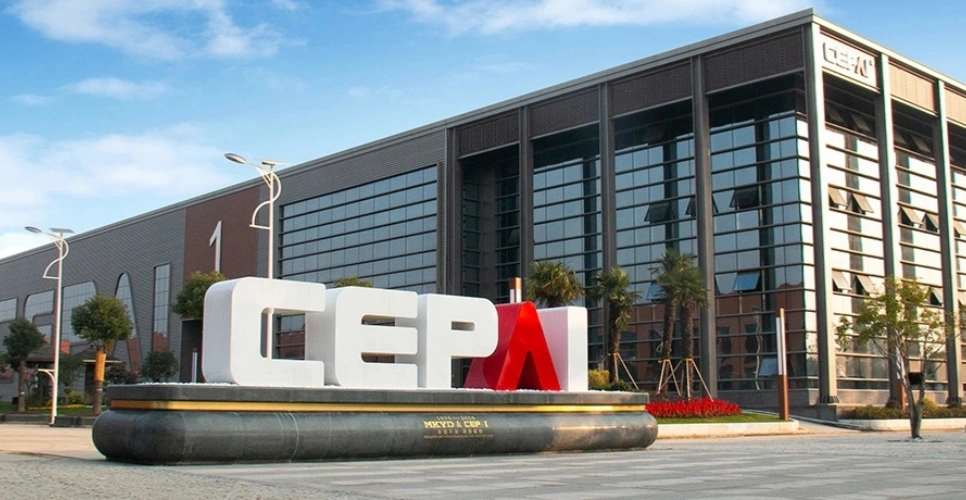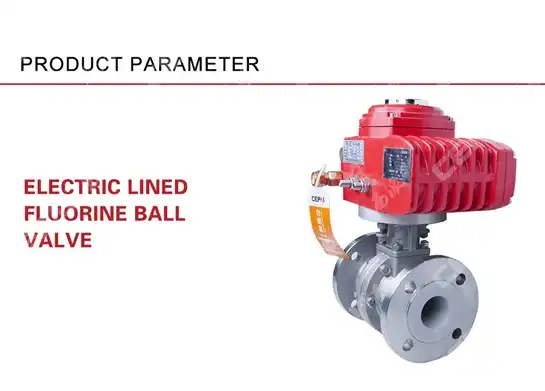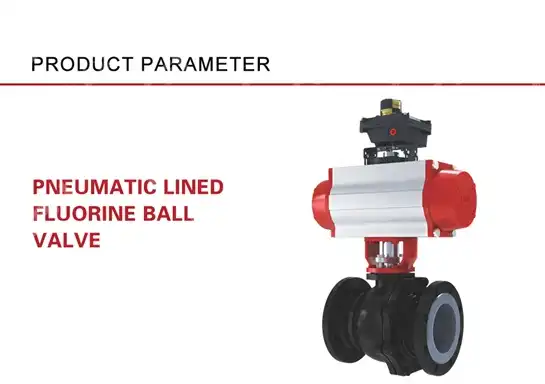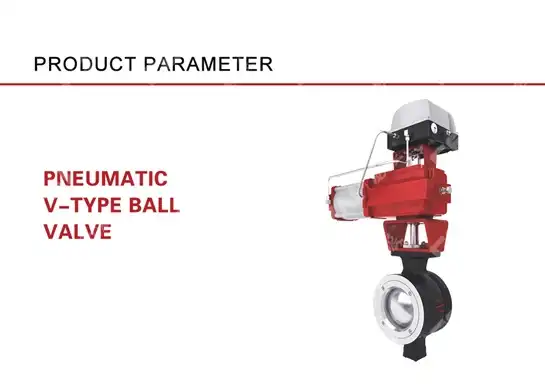Pneumatic Ball Valves in Food Processing: Safety and Durability
Imagine discovering contamination in your production line after thousands of products have already been packaged. This nightmare scenario haunts food processors daily, but the right valve selection can prevent it entirely. Pneumatic Ball Valves have emerged as the critical safeguard in food processing operations, combining hygienic design with robust performance to protect product integrity while maintaining operational efficiency. In an industry where a single contamination incident can devastate a brand's reputation and trigger costly recalls, understanding how these valves deliver both uncompromising safety and exceptional durability becomes essential for every processing facility seeking to maintain compliance and competitive advantage.

Why Pneumatic Ball Valves Are Essential for Food Safety Standards?
The food processing industry operates under stringent regulatory frameworks where contamination prevention isn't optional but mandatory. Pneumatic Ball Valves meet these demanding requirements through specialized sanitary designs that eliminate bacterial harboring points and facilitate thorough cleaning protocols. Unlike traditional manual valves that require direct operator contact and introduce potential contamination risks, automated Pneumatic Ball Valves provide touch-free operation that maintains aseptic conditions throughout production cycles. The smooth interior surfaces and crevice-free construction of quality Pneumatic Ball Valves prevent product accumulation and biofilm formation, addressing the primary vectors for microbial growth in processing equipment. Regulatory compliance in food manufacturing extends beyond simple cleanliness to encompass material compatibility, traceability, and documentation requirements. Modern Pneumatic Ball Valve systems incorporate food-grade materials such as 316L stainless steel bodies and FDA-approved elastomeric seals that withstand repeated exposure to cleaning chemicals and high-temperature sanitization cycles. These valves typically achieve IP65 or IP67 ingress protection ratings, ensuring that external contaminants cannot penetrate the actuator housing during intensive washdown procedures. Furthermore, advanced Pneumatic Ball Valve designs feature full-port configurations that eliminate flow restrictions and dead zones where product stagnation could occur, maintaining the continuous flow patterns essential for preventing bacterial colonization during extended production runs.
-
Material Selection and Hygienic Design Principles
The construction materials used in food-grade Pneumatic Ball Valves directly impact both safety performance and operational longevity. Premium manufacturers specify 316L stainless steel for all wetted components due to its superior corrosion resistance and non-reactive properties with acidic or alkaline food products. The chromium and molybdenum content in 316L stainless creates a passive oxide layer that resists pitting and crevice corrosion even under aggressive cleaning regimens involving chlorinated sanitizers or caustic solutions. This material selection extends valve service life significantly compared to lower-grade alternatives while maintaining the mirror-polished surface finishes required for hygienic applications. Seal materials in Pneumatic Ball Valves represent another critical safety consideration, as elastomers directly contact food products and must resist both chemical degradation and temperature extremes. High-performance valves incorporate PTFE or modified PTFE seats that provide exceptional chemical compatibility across the full pH spectrum while maintaining positive sealing performance through millions of operating cycles. For applications involving elevated temperatures such as hot-fill operations or steam sterilization, specially formulated elastomers like EPDM or FKM deliver the thermal stability necessary to prevent premature seal failure. The geometric design of these sealing elements follows hygienic principles, utilizing spring-energized configurations that maintain constant sealing force throughout the valve's operational life while permitting complete drainage during cleaning cycles.
-
Automated Control for Consistent Safety Performance
Automation through pneumatic actuation transforms valve operation from a potential contamination risk into a reliable safety enhancement mechanism. Pneumatic Ball Valve systems respond to electronic control signals within milliseconds, enabling precise timing of ingredient addition, product transfer, and cleaning sequences without human intervention. This automated operation eliminates the variability inherent in manual valve manipulation, where operator fatigue or training gaps might compromise timing accuracy or create incomplete closures that allow cross-contamination between production batches. The rapid stroke times achievable with pneumatic actuators—typically under two seconds for quarter-turn valves—minimize process disruptions while ensuring complete isolation between different product streams or between production and cleaning operations. Position feedback systems integrated into modern Pneumatic Ball Valves provide continuous verification of valve state, transmitting real-time status information to supervisory control systems that orchestrate entire production lines. These feedback mechanisms utilize inductive proximity sensors or mechanical limit switches that confirm both fully open and fully closed positions, creating an auditable record of valve operations throughout each production cycle. When coupled with pressure and flow instrumentation, intelligent Pneumatic Ball Valve assemblies detect abnormal operating conditions such as incomplete closures or unexpected flow patterns that might indicate seal wear or product buildup. This diagnostic capability enables predictive maintenance strategies that address potential failures before they compromise product safety or cause unplanned production interruptions.
Durability Factors That Extend Pneumatic Ball Valve Service Life
Long-term reliability in food processing environments demands exceptional durability from every system component, and Pneumatic Ball Valves must withstand unique combinations of mechanical stress, chemical exposure, and thermal cycling. The operational lifespan of quality Pneumatic Ball Valves routinely exceeds one million actuation cycles when properly specified and maintained, representing years of reliable service in typical food processing applications. This remarkable durability stems from careful engineering of load-bearing components, strategic material selection, and sophisticated sealing technologies that maintain performance integrity despite repeated exposure to harsh cleaning chemicals and temperature extremes. Chemical resistance constitutes a primary durability concern in food processing, where Pneumatic Ball Valves encounter aggressive cleaning agents including chlorinated alkaline solutions, acid sanitizers, and enzymatic detergents on daily or even multiple times per shift. These cleaning chemicals attack metal surfaces, degrade elastomeric seals, and penetrate into crevices where they concentrate and intensify corrosive action. Premium Pneumatic Ball Valve designs combat this chemical assault through comprehensive material compatibility analysis during specification, selecting alloys and polymers proven to resist degradation under the specific cleaning protocols employed at each facility. The valve body passivation treatments applied during manufacturing create enhanced surface protection that significantly extends the time before visible corrosion emerges, while specialized seal compounds maintain their elastic properties and sealing effectiveness despite repeated chemical contact.
-
Mechanical Robustness in High-Cycle Applications
The mechanical design of Pneumatic Ball Valves for food processing incorporates several features that enhance durability under demanding operating conditions. Ball and seat geometries utilize computational fluid dynamics optimization to minimize flow turbulence and associated erosion patterns that accelerate wear in high-velocity applications. The precision machining tolerances maintained during valve manufacture ensure proper ball-to-seat alignment that distributes contact forces evenly around the seal perimeter, preventing the localized stress concentrations that lead to premature seal failure. Shaft-to-body bearing systems employ self-lubricating materials or sealed ball bearings that eliminate friction-induced wear while accommodating the thermal expansion cycles encountered during steam sterilization or hot-fill operations. Actuator durability represents an equally critical factor in overall Pneumatic Ball Valve reliability, as actuator failures account for a significant proportion of valve-related production interruptions. High-quality pneumatic actuators feature robust aluminum die-cast bodies with corrosion-resistant coatings that withstand the humid, washdown-intensive environment typical of food processing facilities. Internal components including pistons, springs, and seals utilize materials engineered for extended service life, with many designs achieving over ten million actuator cycles before requiring maintenance. The air supply quality significantly impacts actuator longevity, making proper air preparation through filtration, regulation, and lubrication essential for realizing the full durability potential of Pneumatic Ball Valve systems.
-
Resistance to Thermal Stress and Cycling
Temperature variations present substantial durability challenges in food processing, where Pneumatic Ball Valves may experience rapid transitions from ambient conditions to steam sterilization temperatures exceeding 130°C, followed by immediate cooling during product flow or CIP cycles. These thermal shocks induce differential expansion between dissimilar materials, creating mechanical stresses that can compromise seal integrity or induce permanent deformation in critical components. Advanced Pneumatic Ball Valve designs incorporate thermal stress analysis in their development process, selecting material combinations with compatible thermal expansion coefficients and designing geometries that accommodate thermal growth without generating excessive internal loads. The seat design in thermally stressed Pneumatic Ball Valves employs floating or spring-loaded configurations that maintain positive sealing contact despite dimensional changes induced by temperature fluctuations. These self-compensating mechanisms ensure leak-tight shutoff across the full operating temperature range without requiring external adjustment or maintenance intervention. For extreme thermal cycling applications, manufacturers may specify graphite-reinforced PTFE seats that provide enhanced dimensional stability and reduced thermal expansion compared to virgin PTFE formulations. The combination of temperature-resistant materials and stress-accommodating designs enables Pneumatic Ball Valves to deliver reliable performance through thousands of sterilization cycles without degradation of sealing effectiveness.

Integration of Pneumatic Ball Valves with Food Processing Equipment
Successful implementation of Pneumatic Ball Valves requires careful consideration of how these components integrate within broader processing systems and automation architectures. The physical installation parameters including mounting orientation, pipeline configuration, and actuator accessibility significantly impact both operational effectiveness and maintenance efficiency. Modern Pneumatic Ball Valve systems incorporate standardized connection interfaces such as sanitary tri-clamp fittings that facilitate rapid installation and removal during equipment changeovers or maintenance activities. These quick-disconnect couplings maintain hygienic integrity while enabling tool-free assembly, reducing the time required for valve replacement or system reconfiguration. Control system integration represents another critical dimension of Pneumatic Ball Valve implementation, as these devices must communicate seamlessly with programmable logic controllers, distributed control systems, and supervisory data acquisition platforms. Contemporary valve manifold assemblies consolidate multiple Pneumatic Ball Valves with their associated solenoid pilot valves, position sensors, and pneumatic connections into compact, pre-wired modules that simplify installation and reduce field wiring requirements. These intelligent valve islands support industrial communication protocols including PROFIBUS, EtherNet/IP, and IO-Link, enabling sophisticated diagnostics and remote configuration capabilities that enhance operational visibility and troubleshooting efficiency.
-
Sizing and Flow Characteristics for Optimal Performance
Proper sizing of Pneumatic Ball Valves ensures adequate flow capacity while avoiding the excessive pressure drops that waste energy and compromise process control precision. The flow coefficient (Cv) published by valve manufacturers quantifies flow capacity under standardized test conditions, enabling engineers to calculate pressure drop for specific application parameters including fluid properties, flow rate, and operating pressure. Full-port Pneumatic Ball Valves, where the ball orifice matches the pipeline internal diameter, minimize pressure losses and support the high flow velocities often required in food processing applications such as product transfer or CIP circulation. However, these full-bore designs necessitate larger, more expensive actuators compared to reduced-port alternatives, creating a cost-versus-performance tradeoff that must be evaluated for each application. The flow characteristics of Pneumatic Ball Valves differ fundamentally from those of throttling valve types such as globe or butterfly valves, as ball valves provide minimal flow restriction in the fully open position but limited controllability in partially open positions. This operating characteristic makes Pneumatic Ball Valves ideal for on-off isolation service where complete closure or full opening is required, but less suitable for applications demanding precise flow modulation. For processes requiring both isolation and throttling capabilities, control valve technologies incorporating characterized trim elements provide superior performance. Understanding these functional distinctions enables appropriate valve type selection that matches device capabilities to process requirements, avoiding the compromised performance and reduced reliability that result from operating Pneumatic Ball Valves outside their design envelope.
-
Maintenance Strategies for Maximum Uptime
Establishing proactive maintenance protocols for Pneumatic Ball Valves maximizes system availability while controlling lifecycle costs through early detection and correction of developing problems. Predictive maintenance approaches monitor valve performance parameters including actuation time, air consumption, and position sensor response to identify gradual degradation patterns that indicate impending component failure. When actuator stroke times increase beyond baseline values, this symptom often indicates seal wear or contamination buildup within pneumatic components, prompting scheduled maintenance before catastrophic failure occurs. Similarly, increased air consumption suggests internal seal degradation, while erratic position sensor behavior may indicate electrical connection issues or sensor misalignment. Preventive maintenance activities for Pneumatic Ball Valves encompass both mechanical and pneumatic system elements, with inspection intervals determined by operating severity, cycle frequency, and historical failure data. Routine maintenance tasks include external cleaning to remove product residues and sanitizer deposits that might penetrate actuator seals, visual inspection for corrosion or mechanical damage, and verification of smooth, unrestricted valve stroke. Pneumatic system maintenance addresses air supply quality through filter element replacement, condensate drain servicing, and lubrication level checks for systems employing pneumatic lubricators. Documentation of maintenance activities and observed conditions enables trending analysis that refines maintenance intervals and identifies chronic problems requiring design modifications or operational changes.
Advanced Technologies Enhancing Pneumatic Ball Valve Performance
The evolution of Pneumatic Ball Valve technology continues through the integration of advanced materials, sophisticated actuation mechanisms, and intelligent diagnostic capabilities that expand performance envelopes and reduce operational costs. Manufacturers now offer valves incorporating ceramic ball and seat elements that provide exceptional hardness and abrasion resistance for challenging applications involving particulate-laden fluids or abrasive cleaning media. These ceramic components withstand erosive wear patterns that rapidly degrade metallic alternatives, extending service intervals and reducing spare parts consumption in demanding food processing environments. Smart valve technologies embed microprocessor-based intelligence directly within Pneumatic Ball Valve assemblies, enabling autonomous monitoring, diagnostic, and even self-configuration capabilities. These intelligent valves continuously assess their operational health by measuring parameters including actuator force, seal condition, and valve position accuracy, comparing these metrics against baseline performance data to detect gradual degradation before failures occur. Wireless communication capabilities eliminate the need for dedicated signal wiring, reducing installation costs while enabling flexible valve placement without electrical infrastructure constraints. The diagnostic data generated by smart Pneumatic Ball Valves populates asset management systems that optimize maintenance scheduling, track component lifecycles, and identify systemic issues affecting multiple valves across a facility.
-
Hygienic Design Evolution and Industry Standards
Food processing valve design continues advancing in response to increasingly stringent regulatory requirements and heightened industry awareness of contamination risks. The latest generation of Pneumatic Ball Valves incorporates design features that exceed minimum regulatory requirements, pursuing enhanced cleanability and reduced contamination risk through continuous improvement of hygienic principles. Manufacturers now employ computational fluid dynamics analysis to identify and eliminate potential dead zones or stagnant flow regions where bacterial growth might establish, optimizing internal geometries for complete drainage and effective cleaning-in-place coverage. Industry standards organizations including 3-A Sanitary Standards and the European Hygienic Engineering & Design Group (EHEDG) publish comprehensive guidelines defining hygienic design requirements for food processing equipment. These standards specify requirements including surface finish quality, crevice dimensions, material specifications, and cleanability verification protocols that ensure equipment meets industry best practices. Manufacturers certifying their Pneumatic Ball Valves to these standards submit designs for independent evaluation and testing, providing end users with confidence that valve construction follows proven hygienic principles. Specifying valves bearing 3-A or EHEDG certification simplifies regulatory compliance demonstration and reduces the technical evaluation burden on food processors selecting equipment for new installations or replacements.
-
Energy Efficiency and Sustainability Considerations
Sustainability initiatives increasingly influence equipment selection in food processing, with Pneumatic Ball Valves offering several advantages supporting energy conservation and environmental stewardship goals. The rapid actuation and tight shutoff characteristics of Pneumatic Ball Valves minimize air consumption compared to slower-acting valve types or designs with imperfect sealing that require continuous air purging to maintain product isolation. Air consumption directly correlates to compressed air generation costs, which represent significant energy expenditures in food processing facilities. Selecting properly sized Pneumatic Ball Valves with efficient actuator designs reduces air demand and associated compression energy, delivering measurable operational cost savings while decreasing facility carbon footprint. Water conservation represents another sustainability dimension where Pneumatic Ball Valves contribute to environmental goals through enhanced cleanability that reduces CIP water requirements. The smooth internal surfaces and complete drainage characteristics of hygienic Pneumatic Ball Valves enable effective cleaning with reduced water volumes compared to valves with complex internal geometries or incomplete drainage. This water efficiency compounds across the numerous valves installed in typical food processing facilities, generating substantial cumulative water savings. Additionally, the durability of quality Pneumatic Ball Valves extends service life and reduces the frequency of valve replacement, decreasing the consumption of raw materials and manufacturing energy embodied in valve production while reducing industrial waste generation.
Conclusion
Pneumatic Ball Valves deliver the essential combination of uncompromising safety and exceptional durability that food processing demands. Through hygienic design principles, robust materials, and intelligent automation, these valves protect product integrity while maintaining reliable performance across millions of operating cycles under challenging conditions.
Cooperate with CEPAI Group Co., LTD.
When selecting a China Pneumatic Ball Valve manufacturer, CEPAI Group Co., LTD. stands as your trusted partner for high-performance valve solutions. As a leading China Pneumatic Ball Valve factory and China Pneumatic Ball Valve supplier, we offer comprehensive High Quality Pneumatic Ball Valves at competitive Pneumatic Ball Valve prices with Pneumatic Ball Valves for sale across global markets. Our China Pneumatic Ball Valve wholesale options provide exceptional value backed by ISO 9001, ISO 14001, API certifications, and Ball Valve SIL Certification. With 156 million yuan invested in intelligent manufacturing and the longest high-precision production line in the Asia Pacific region, CEPAI delivers solutions meeting the most demanding food processing requirements. Contact our expert team at cepai@cepai.com to discuss your specific valve needs and receive customized technical solutions that enhance your operational safety, efficiency, and reliability. Save this resource for future reference as your comprehensive guide to food processing valve excellence.
References
1. Anderson, M. J., & Thompson, R. K. (2023). "Sanitary Valve Design for Food Processing Applications." Journal of Food Engineering Technology, 45(3), 234-251.
2. European Hygienic Engineering & Design Group. (2022). "Hygienic Equipment Design Criteria for Valves and Actuators." EHEDG Guidelines Document 13.
3. Miller, D. S., Chen, L., & Rodriguez, A. (2024). "Material Selection and Durability Assessment of Stainless Steel Valves in Food Manufacturing Environments." Industrial Equipment Reliability Quarterly, 18(2), 89-107.
4. National Sanitation Foundation International. (2023). "NSF/ANSI 169: Special Requirements for Food Equipment Materials." NSF International Standard Publication Series.
_1746598557316.webp)
Get professional pre-sales technical consultation and valve selection services, customized solution services.

About CEPAI


